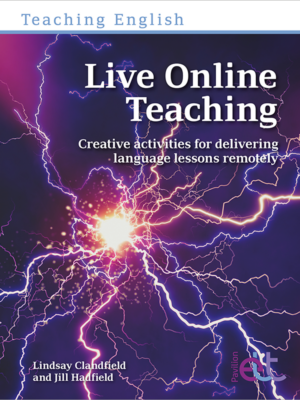Description
Elementary Communication Games 2.0 is the first title in the new generation of the Communication Games series. The idea behind this new generation is to be a go-to resource of communication games and activities, providing a wide variety of activities for communicative and interactive practice to help teachers get the most out of their learners in speaking tasks, and is designed to help them put the fun back into learning in meaningful and motivational ways. Earlier editions of the series have been best sellers globally and have already been translated into 12 languages. The new series takes on board feedback from these earlier generations and modern viewpoints, global issues and topical discussions, and current teaching practices into account, and adds an additional 20% of new games. It also explores how these games and activities can be used in both face-to-face classrooms and online, which often poses different challenges. Organised into 50 activities with varying time frames according to level and type of activity, each book in the Communication Games 2.0 series consists of comprehensive teacher’s notes with aims, language summaries and detailed procedure for each game or activity for both teaching face to face in class and live online; pages of photocopiable materials for each game or activity; and photocopiable rules sheets for the learners.
Elementary Communication Games 2.0 has been specially written for beginners and elementary language learners at CEFR A1–A2 level – the tasks have been designed in such a way that only a very limited knowledge of the language is necessary to complete them. They can also be used with higher-level learners as revision or error correction of (a) particular structure(s) or (a) specific topic(s), or used as part of preparation for an oral exam such as Trinity GESE (Graded Examinations in Spoken English), grades 1–5. The games and activities are not designed to any one specific syllabus: teachers are free to select appropriate games to fit in with their own syllabus or extend topics from their coursebook, or indeed practice structures that have emerged from the learners’ own language input.
Each game or activity is interactive and involves cooperation rather than competition – they all have a non-linguistic aim, such as matching, drawing, ordering, collecting, sharing information, in order to successfully complete the task. They have been carefully designed to involve intensive practice of a certain set of functions, structures and lexis, like giving personal information, using simple past or recapping food vocabulary, whilst bringing real-world tasks into the lesson. Each game or activity can be located via a structural and a functional index so that teachers can quickly identify their linguistic focus. They also have the added benefits of building good group dynamics through class cooperation and enjoyment, and inspiring learners’ creativity and invention, thereby giving learners a sense of achievement and a greater second-language identity.
Each game and activity is written within a specific functional area and limited to one or two grammatical structures, a clearly defined lexical field and key vocabulary. They can be used with beginners right from the very first lesson. The games are arranged in approximate order of difficulty, following a traditional structural progression, although teachers may, of course, use the games and activities in any order, following their own syllabuses. If you are new to teaching, Communication Games 2.0 will support you on your way with realistic communicative, language practice. If you’re an experienced teacher, it will remind you of games and activities you haven’t used in a while and offer you fresh new ideas or topics to increase your repertoire.
Elementary Communication Games 2.0 is part of the Communication Games series, alongside Intermediate Communication Games 2.0 and Advanced Communication Games 2.0. Jill Hadfield is also the co-author of Live Online Teaching.










Reviews
There are no reviews yet.